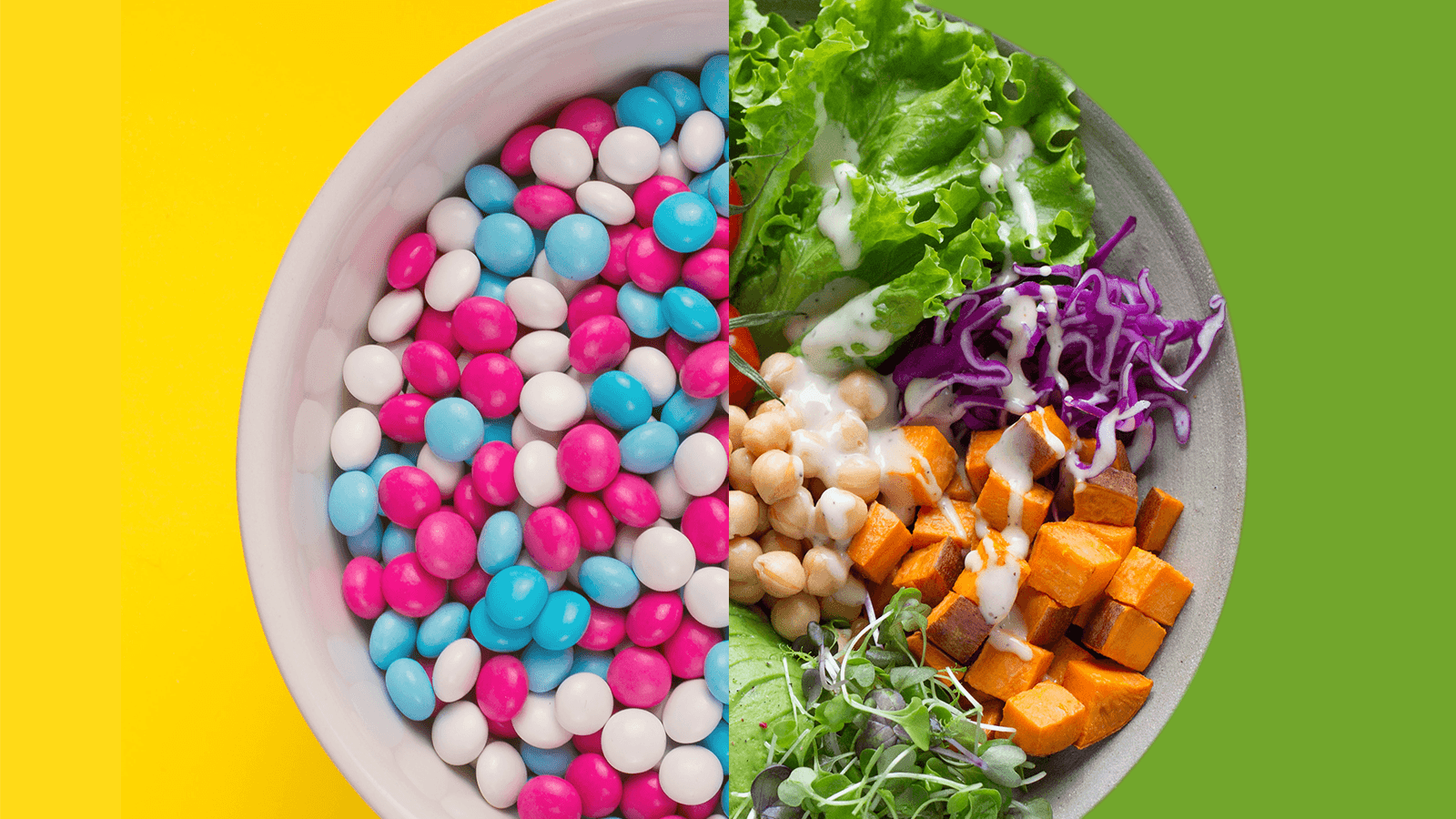Stop Data Snacking
What is data snacking? And what is the alternative?
At Amplitude we help teams make the shift from data snacking to a balanced, healthy, everyday data diet.
What is data snacking?
Picture a product manager hacking together some SQL for a one-off report. The query is getting very complex. She’s rushing to get a pitch together and she’s sure her strategy is the right strategy. Run the query! Import into Google Sheets! Tweak! Chart! Copy and paste!
No one can recreate the charts she’s dropping in her big pitch presentation. No one can explore the underlying data. What are active users anyway? Who is the who? Why that dip and variability?
Continue Your Learning:
Amplitude Lab Hours with John Cutler
Join the author of this post for a live and collaborative video series about how teams can build smarter, faster, and with greater impact.
Register now and access past sessions >>
And then poof! That work is a distant memory as the pitch dazzles, and the project gets green-lighted. Work starts. The team invests hundreds of hours in design and development. The initiative ships with a dash of success theater and another one-off query and report. And on to the next shiny thing, pulled together in a rush of next-quarter planning.
The initiative ships with a dash of success theater and another one-off query and report.
This is data snacking. It feels ad hoc, one-off, front-loaded, and not repeatable. There’s very little team collaboration on the question-framing and insights. Instead of starting with a decision to inform and make, a question to answer, or an opportunity to explore, the analysis starts with a point to prove. You work with whatever data you can get your hands on. Importantly, you can data-snack with both qualitative and quantitative research (and data).
Why does it happen?
For some teams, working this way is not a choice. They lack access to a product like Amplitude that enables exploration and collaboration. At best, you submit a ticket to an overworked analyst, or go data scrounging in the fridge and use whatever you find.
Other teams have the right ingredients and intent. Once in a while they poke their head into the tool and find something interesting (or hastily pull together a business case). But they don’t practice and build the product intelligence muscle and integrate measurement into how they work day-to-day.
What gets in the way of practicing?
In most cases the organization hasn’t experienced the true upside of taking a more data-informed approach. They haven’t seen it work, and there’s always pressure to ship and keep people busy.
What is the alternative to data snacking?
First, like a healthy diet we have to acknowledge that this is a spectrum. We are talking about tendencies and positive habit-building rather than absolutes. I’ve yet to meet a team — even at companies known to be extremely data savvy — that has everything figured out. No one is perfect. In fact, it is the teams that admit this is a work in progress that seem to make the most progress.
In fact, it is the teams that admit this is a work in progress that seem to make the most progress.
Learn how teams at Quick Books answer 95% of their own questions without the help of an analyst.
These tendencies include things like:
- Instrumentation as a regular/automatic activity instead of a one-off project or special task. Teams own their instrumentation efforts (with lightweight governance).
- Widespread awareness about the data that is available, where it comes from, and how to use it. Access and no silos.
- Starting with key questions, decisions, and hypotheses — instead of post hoc rationalization. A focus on learning. Deliberate use of quantitative and qualitative data for both generative and evaluative research. “Using data” doesn’t stop once the effort starts.
- Teams (and roadmaps) focused on specific outcomes with a clear connection to the product strategy. They close the loop on product decisions.
- Analysis as a team sport. Team members are invited to explore, critique, and refine each other’s work. There’s frequent refinement. Data jams. A concerted effort to improve data literacy.
- Insights as a key part of kickoffs, discovery efforts, brainstorming sessions, roadmap reviews, check ins, and company all-hands, etc. Dashboards and notebooks persist across individual initiatives as well as across initiatives. The team builds on what it learns, and revisits assumptions.
- Regular interaction with customers and users (remember, this is data as well)
There’s a theme here which could be best described as integration. For teams that make the shift from data snacking, insights and analysis become a continuous heartbeat. The quest for perfection and 100% certainty gives way to practice and repetition…gradually improving decision quality and focusing on having more impact.
For teams that make the shift from data snacking, insights and analysis become a continuous heartbeat.
It’s just how the team works.
To reiterate, this is about a direction and not a destination. For some teams, the starting point is simple: putting a small stake in the ground for a measurable outcome — which humans will be impacted, and how will their behavior change — and then closing the loop after the thing has shipped. Another good habit is getting a dashboard going (simple is perfectly fine), and revisiting it daily/weekly. You may be way off at first, but going through those motions is a valuable first step.
Our customer success team here at Amplitude, and our own analytics and insights, have validated this again and again. Going around the learn, build, measure loop again and again is what helps build the muscle.
For more tips check out Do This Now: 8 Ways to Focus your Product Team on Impact, Not Features where we cover safe hacks to integrate measurement into your team’s day-to-day.

John Cutler
Former Product Evangelist, Amplitude
John Cutler is a former product evangelist and coach at Amplitude.
More from John




